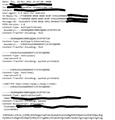
Fax server doesn't like Thunderbird-composed emails
My VoIP provider offers an email to fax service; you send it an attachment with a phone number in the address and it will fax the attachment. When I send messages to this server using Thunderbird, the server ignores them, as if the message had no attachment. If I send using any other client than Thunderbird, the server functions normally.
One significant difference I've noticed is that Thunderbird begins multipart encoding at the top of the message, whereas other clients do some headers first. See screenshots. I don't know if that's significant or if it's a red herring but TB seems to behave differently than others in this way.
Összes válasz (1)
It's worth noting that the last time I used this capability was in 2019 with Thunderbird 60 and it worked. Back then, the messages were formatted more like my second example, with plain text headers before the multipart encoding starts.


